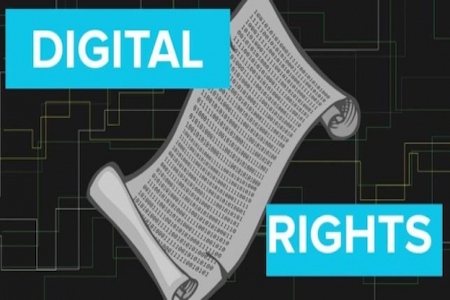
Imagine you are a digital rights organization that has developed a series of materials on digital rights literacy, and now your organization is ready to conduct a digital rights advocacy campaign on a pressing threat to an open internet in your community, country, or region. The task of conducting a campaign on digital rights can seem daunting to some organizations, but there is a five-step approach you can follow to assist you in the advocacy process.
By Mary Rose Ofianga, 2018-2019 Open Internet Leader
Imagine you are a digital rights organization that has developed a series of materials on digital rights literacy, and now your organization is ready to conduct a digital rights advocacy campaign on a pressing threat to an open internet in your community, country, or region. The task of conducting a campaign on digital rights can seem daunting to some organizations, but there is a five-step approach you can follow to assist you in the advocacy process.
Step 1 – Identify the Key Message and Target Audience
The first step in any campaign is to understand the key message and identify the target audience. The most effective digital rights campaigns are the ones that are inclusive and grassroots led. Therefore, when developing your key message, it is important to include opinions and views from several stakeholders. For example, if the aim is to address fake news, what communities are impacted the most by disinformation? What are the issues they face? What are some key recommendations on how to improve online platforms?
By observing various opinions from stakeholders on the issues at stake, you will be able to sharpen your key message and identify who the campaign is aimed towards, such as a relevant government ministry or platform.
It is crucial that you continue to engage with a wide range of stakeholders throughout the entire campaign. For example, if you are engaging with women entrepreneurs, a large majority of women entrepreneurs spend most of their time on social media. Continue to engage with them through social media campaigns.
Step 2 – Determine Community Champions
Successful advocacy campaigns often have a public champion, such as a community leader or politician, who can influence others and spread awareness on your campaign. To define community champions, it is important to conduct a stakeholder mapping exercise. In this mapping exercise, address leaders of several groups within the community, and then identify who you are already in contact with. Building professional relationships with key figures is crucial, as collaborating with a community champion helps create visibility for the campaign.
Step 3 – Organize a Meet Up
When conducting a digital rights campaign, it is important to have your campaign’s presence both online and offline. Therefore, it is essential to organize an in-person meet up with key stakeholders who can help further your campaign in addition to posting on social media. If budget is an issue, consider partnering with local coffee shops or a co-working space that will provide a free venue for the meetup. Invite your community champion and give them time to speak at the event to add credibility to your campaign. Then present the issues you are addressing in the campaign, key recommendations on how to solve them, and how to get involved.
Step 4 – Identify the Best Online Channel
It is important that you share news and updates related to your digital rights campaign on the online communication channel most relevant to your target audiences. You might need to create a webpage or social media page for this purpose. This could be a blog site, a Facebook page, Facebook group, Instagram, or YouTube. The main purpose is for your audience to have a consistent source of information. In order to track the reach of the campaign, consider developing a specific hashtag related to the campaign.
Step 5 – Continuous Education and Engagement
It is crucial to keep your community involved and engaged in discussions on digital rights that complement your campaign throughout the year. By being the main point of contact and convener in your local community for digital rights, your advocacy initiatives will become more effective.
In conclusion, organizing an effective community-based campaign on digital rights advocacy hinges on this general five-step approach. Remember, a partnership with one person can go a long way, but a network of advocates creates real and sustainable impact. The Open Internet for Democracy Playbook, for instance, is a toolkit written by the Open Internet for Democracy Community that provides ideas and recommendations for the advocates of digital freedoms, focusing on tailored approaches to advocacy that apply across diverse local contexts. To add your ideas and contributions, visit https://openinternet.global/playbook.
- Log in to post comments